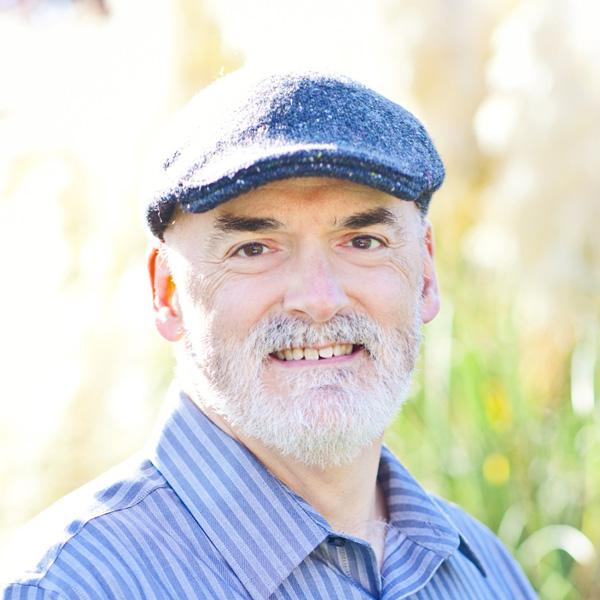More than any other addiction, sex addiction has the most potential to dial up shame. This is what can make it so hard to talk about, and therefore too often it stays hidden.
Unfortunately, as they say in 12-step programs, we are only as sick as our secrets. What this means is when we do things we know are wrong and then hide those behaviors from our loved ones, we gradually poison our soul, and the longer we wait, the worse it is when our behavior comes to light. The good news is that God does not think we are disgusting or hopeless. We are loved and worthy of redemption, no matter what.
Understanding Sexual Response
Our bodies are created with the capacity for sexual response, and at the physical level that response is involuntary. People in scientific studies who are shown photos of animals mating often respond with disgust, but almost without exception their bodies display the physical attributes of arousal. This is important to understand when beginning to think about addiction.
 We are created to be in relationship, to bond, to join, to procreate, and these needs are interwoven with our deepest emotions of hope (to be seen, known, and loved as we are) and fear (that we will be judged, found inadequate, and be rejected). Addictive behaviors are activated by those needs and fears.
We are created to be in relationship, to bond, to join, to procreate, and these needs are interwoven with our deepest emotions of hope (to be seen, known, and loved as we are) and fear (that we will be judged, found inadequate, and be rejected). Addictive behaviors are activated by those needs and fears.
The more early trauma we have in our story, the more likely we will be susceptible to addictive tendencies around sex. Often with sexual addiction, there is an emotional wound, usually from one or more close family members, which has left us with an emotional deficit. You may have heard it described as a hole we keep trying to fill. The need to fill it easily becomes sexualized because the power of arousal naturally links to our desire to be closely bonded.
Done as intended, sex is a mutual experience of bonding at the mental, emotional, spiritual, and physical level. However, because we live in a fallen world, any one of those levels can be damaged in a way that disrupts bonding. The most reliable constant is the physical level, because arousal is such a powerful motivator. This is why there used to be so many societal obstacles to people casually engaging in sex.
Realities of Bonding
In her book, “Sex Has a Price Tag,” by Pam Stenzel, the author speaks of a demonstration she used to perform at assemblies where she was talking about abstinence. She would have three students stand up and she would wrap a strip of duct tape around the first student’s forearm. Then she would take it off, and the audience would laugh because for the first person all of the arm hair and any dead skin cells came off with it.
Then she’d turn to the next person and wrap the same piece of tape around their forearm. This time when she took it off, only some of the hair and dead skin came with it. By the time she got to the third person, the tape wasn’t sticking well anymore and she could hardly get it to stay on. And so it is with bonding. If two people are in love, in a sexual act they can connect on all four levels, in a unique way, and in a very real way “infect” each other with each other. A person who seeks multiple partners for just a physical experience will find their ability to bond on one or more levels diminished over time.
Our capacity for meaningful connection with someone can be damaged to the point that we have to relearn how to connect to someone and experience healthy bonding. This is not to say our sexual choices are somehow the only factor. We are holistic beings, made up of body, mind, emotions, and spirit. We may be broken in any or all of these areas, sometimes significantly, and that brokenness will influence our choices specific to our particular story and defensive structure.
What is Sex Addiction?
Sex addiction encompasses any sexual behavior we can’t control (or stop) which consumes us, negatively impacting our relationships, marriage, family, work, or other part of our lives. When talking about sexual addiction, it is important to remember that definitions of deviancy have changed substantially over the last 70 years.
Many sexual behaviors have been normalized in society and are considered “in bounds” socially. For behaviors that are not illegal, a good rule of thumb when evaluating for sexual addiction is how the behavior is impacting you and those around you, and how upsetting it is to you personally.
Sexual addiction may include, but is not limited to chasing sexual conquests, frequenting strip bars, prostitutes, sexually explicit web-cams, sexually explicit chat, pornography, compulsive masturbation, and other behaviors medically classified as deviant such as exhibitionism, fetishism, frotteurism, pedophilia, sexual masochism, sexual sadism, transvestic fetishism, voyeurism, paraphilia, and other behaviors not specified.
 The need and biological predisposition for bonding we talked about above makes it possible to become sexually aroused by just about any animate or inanimate object, more so if we have been conditioned by experience to associate that object with sexuality.
The need and biological predisposition for bonding we talked about above makes it possible to become sexually aroused by just about any animate or inanimate object, more so if we have been conditioned by experience to associate that object with sexuality.
So often we are not in control of our first sexual experience, and poorly informed about what is happening to us. I will say it again, our sexually addictive behavior comes out of a place of involuntary arousal. As surely as our younger self may have been blindsided by our first moment of sexual discovery, we can be blindsided by arousal and this does not make us bad. It does, however, make us vulnerable. Because of the involuntary nature of arousal, saying over and over “God help me,” “That is sick and wrong, “ or “I love my boyfriend/girlfriend/spouse,” is not going to be enough to change the behavior if you are in an addictive cycle.
The Addictive Cycle
As I mentioned in a previous article, there are a number of “Cycle of Addiction” graphics out there, but the essential elements are the same. If you struggle with addiction, you will go through these stages: Emotional Trigger, Craving, Ritual, Using, and Guilt. Then the cycle starts all over again.
Emotional Trigger
With sexual addiction a trigger can be almost anything. A frustrating day, a difficult conversation, unintentional visual stimulation (like an attractive person on the elevator), or really any experience that makes a person feel one down, out of control, or aroused.
Craving
This is when the desire to use manifests. A person starts to think about it, often shadow-boxing with it, making half-hearted efforts to resist, or pushing thoughts of resisting out of the mind so the cycle can continue. There is often a sense of entitlement, “I deserve to feel better,” “he/she hurt my feelings.” There can be many subtle methods the person employs to allow the cycle to continue.
Ritual
Now the person is actively moving toward using. The person seeks isolation or the best environment to pursue the addiction, arranging things so as not to be caught, doing whatever they normally do to prepare to use and to ensure it is a satisfactory experience. Desire to use builds in this phase until there is no thought of interrupting the cycle. Using is a foregone conclusion.
Using
Desire peaks, opportunity has been arranged, and the person acts on the desire, experiencing whatever euphoria, or feelings of well-being are afforded by the behavior.
Guilt
As the glow of the neurochemical wave passes, the thinking brain begins to reassert itself, and guilt and shame may flood, or dissociation to keep from feeling at all, and the person is back at the beginning of the cycle. These cycles can be quite regular, whether using once every three weeks, or three or more times a day.
 Psychodynamic psychotherapy with a therapist can be useful for understanding our emotional triggers around addiction. Understanding our triggers is the first step in beginning to overcome addiction.
Psychodynamic psychotherapy with a therapist can be useful for understanding our emotional triggers around addiction. Understanding our triggers is the first step in beginning to overcome addiction.
Managing Your Recovery
Because of the holistic nature of our sexuality, sexual addiction can seem very powerful and impossible to stand against. This is why we need help. The first step of any 12-step program says something about admitting we are powerless over our addictions, and our lives have become unmanageable. If you have decided to confront your addiction, and are serious about charting a path toward recovery, the more of these options you can employ, the better.
Recovery Program
As I have stated elsewhere, if you have tried to overcome your addiction and failed, it’s time to get into a recovery program. If your addiction is mild to moderate you can get into a recovery program like Celebrate Recovery, get a sponsor, and get into a step group.
To gauge your addiction, rate yourself on a scale of ten in the areas of Frequency (how often do I act out), Severity (how am I acting out), and Impact (how significant is the impact on my loved ones). If any of these measures are 5 or higher, you might want to get into and Sex Addicts Anonymous group, and again get a sponsor.
Therapy
Regardless of severity, you also will likely want to start seeing a therapist to work through the underlying emotional triggers driving the behavior. Our emotional defensive structures form over years when we are too young to think about them in any useful way. Unwrapping the complexities of our trauma narratives can be difficult and time consuming, but over time we can experience a substantial reduction in the compulsiveness of our sexual behavior.
Accountability Group
This is a group of people struggling with similar issues, and can be critical when beginning to unwrap our defensive/addictive structure, as the compulsivity of the addiction may increase. Accountability is only useful to manage the symptoms and behavior, not discovering root causes.
The Role of the Spouse in Recovery
If your spouse is struggling with sexual addiction and you’ve decided to fight it together, try to remember that the very nature of addiction is that the addict cannot stop the behavior on his or her own. The aggrieved spouse is often plagued by thoughts of not being enough, “If I was enough, my spouse wouldn’t need a sexual addiction.” This is simply not true.
 When it comes to early trauma and emotional deficits, we cannot ever be enough for our spouse. We would have to go back in time and replace the inadequate parent, and be a parent to our spouse as a child. All we can do is stand beside them as they try to fight the good fight. Our work is to stand together and face a common enemy, and figure out how to do our own emotional work to move toward growth and health. The enemy is not the behavior, but the Enemy of our souls, in collusion with our emotional pain and the lies we tell ourselves over and over as a result.
When it comes to early trauma and emotional deficits, we cannot ever be enough for our spouse. We would have to go back in time and replace the inadequate parent, and be a parent to our spouse as a child. All we can do is stand beside them as they try to fight the good fight. Our work is to stand together and face a common enemy, and figure out how to do our own emotional work to move toward growth and health. The enemy is not the behavior, but the Enemy of our souls, in collusion with our emotional pain and the lies we tell ourselves over and over as a result.
We have to allow our spouse’s work of recovery to be their work. It is usually helpful for the spouse to be in recovery as well, often for co-dependency, to begin to understand how they might be operating with unhealthy boundaries, or even contributing to the addiction cycle.
As we train ourselves to notice and interrupt the addiction cycle, learn about our emotional traumas and the defenses we built around them, and shut down the negative self-talk that hinders growth, we can actually rewire our brains and disempower the hold of addiction that, left unchecked, would destroy us.
Final Thoughts
As you begin to confront your addictions, a host of emotions may surface. Your body created your emotional defenses to help you survive, and trying to do something different can be very disruptive. Take it slow. Be in it for the long haul. Be curious and kind to yourself. Invite God into the process.
Ask “I wonder what that’s about?” when confronted by your behavior and desires. Find the balance between letting yourself off the hook and beating yourself up. You are a work in progress. The process takes courage, commitment, and patience but over time you can move toward emotional growth and health, one day at a time, one moment at a time, treating hardship as a pathway to peace.
“Thinking,” courtesy of Jacob Botter, Flickr CreativeCommons (CC BY 2.0); “Enjoying the View,” courtesy of blickpixel, pixabay.com, CC0 License; “Girl with Copper Hair,” courtesy of tintenfieber, pixabay.com, CC0 Public Domain License; “Couple on the Seine,” courtesy of zoetnet, Flickr Creative Commons, 2.0 License






